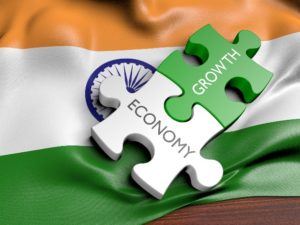
Technology behemoth Google is investing heavily in people and partnerships to grab a larger share of the Indian Cloud market, as it takes on global rivals Microsoft, IBM and Amazon Web Services in the country, a top company executive said.
Google will also leverage its advantage as a ‘data company’ and deploy technology as the key differentiator with expertise in areas such as Artificial Intelligence and Machine Learning, said Karan Bajwa, the newly appointed managing director of Google Cloud in India.
“The technology is right. The brand is right. Google’s hiring great talent and putting the right people in front of the customers, and there’s very strong investments happening on the Google Cloud across the world, as well as in India,” Bajwa told ET.
Only 20% of workloads have so far moved to the cloud and there is opportunity in the remaining 80% which has yet to migrate to public or private clouds, he said.
The ongoing economic crisis unleashed by the Covid-19 pandemic will fast track the shift as more companies look at cost efficiencies, Bajwa said.
Although IBM and Microsoft have a lead over Google in the cloud business, that was not a point of concern, he said.
“For 80% of the companies, the journey will start now, so the fact that somebody is ahead and somebody is behind, I honestly don’t worry about it.”
As capital becomes scarce going forward, people will want to conserve every dollar. “It’s going to move to an operational expense from a capital expenditure. So, there will be a faster acquisition of customers…,” he said.
Google will build a “differentiated partner strategy” compared to rivals. It will also leverage on its huge reach due to its dominance of Search and areas like payments and advertising, he said.
Over the last 60 days, “digital natives” have been looking to optimise existing technology, and companies that have so far not adopted the cloud are opening up to the opportunity due to cost pressures, he pointed out.
“We’ve always seen that incumbency is a strong advantage, Google’s incumbency has built the business in most of these organizations where Google is helping these customers acquire new customers, get into new markets, grow revenues, grow margins, and that’s a very strong incumbency than anyone else,” Bajwa, who was earlier IBM India head and who has had a long stint with Microsoft as its MD of sales and marketing, said.
Google will bet on building a team that wins top customers and competes with the dominant players, he said. “By the time we are done with Covid-19, we will be bringing on board very senior people from the industry who have led organizations and who have very strong credibility. That makes a huge difference as customers feel comfortable with the people they are buying from,” he said.
Last week, Google appointed Microsoft veteran Anil Bhansali as vice president of engineering.
Google already has a tie-up with Bharti Airtel for its cloud business and the search giant also recently announced a second cloud region in Delhi, after it launched the Mumbai region in 2017.
“We would not be making these investments in the tens of billions of dollars if we did not think we would make money with customers,” Bajwa added.
Source: Economic Times





